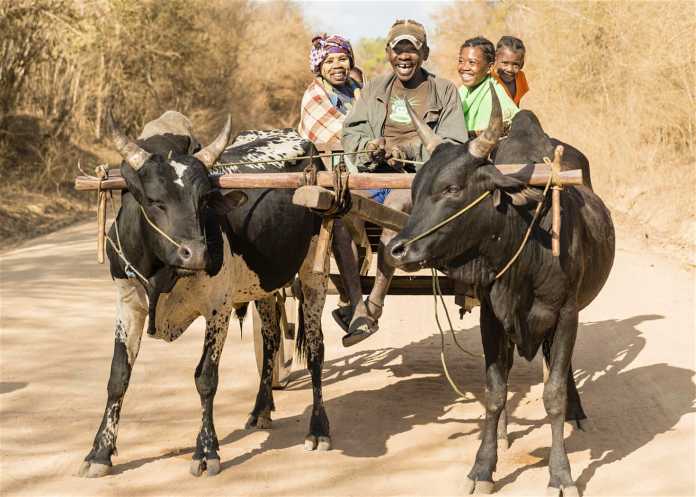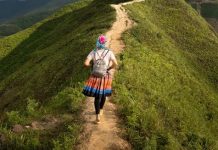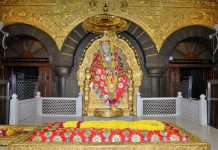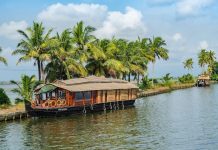Lemurs, baobabs, rainforest, desert, hiking and diving: Madagascar is a dream destination for outdoors enthusiasts – half the fun is getting to all these incredible attractions.
Wild World
Madagascar is unique: 5% of all known animal and plant species can be found here, and here alone. The island’s signature animal is the lemur of course, but there are many more weird and wonderful creatures: the eerie-looking fossa (a cat-like predator), colourful and camouflaged chameleons, oddly shaped insects, vivid frogs, graceful rays and turtles, several species of sharks, and humpback whales during the winter months. Trees and plants are just as impressive, be they the distinctively shaped baobabs, the fanning ravinala (travellers’ palm), the hundreds of orchids or the spiny forests of the desert south.
Epic Landscapes
The remarkable fauna and flora is matched by epic landscapes of an incredible diversity: you can go from rainforest to desert in just 300km. Few places on Earth offer such an intense kaleidoscope of nature. There are sandstone canyons, limestone karsts, mountains, fertile hills cascading with terraced rice paddies, forests of every kind – rain, dry, spiny – and a laterite-rich soil that gave the country its nickname of ‘Red Island’. With 5000km of coastline, the sea is never very far, turquoise and idyllic in places, dangerous in others.
Island Adventures
Making the best of Madagascar can be challenging (and expensive): it is the world’s fourth-largest island and its roads are dismal. For those who relish an adventure, however, this is a one-of-a-kind destination: the off-road driving is phenomenal, there are national parks that only see a few hundred visitors a year, regions that live in autarky during the rainy season and resorts so remote you’ll need a private plane or boat to get there. There are also more activities than you’ll have time for: hiking, diving, mountain biking, kitesurfing, rock-climbing, you name it. Oh, and there are plenty of natural pools, beaches and hammocks on which to recover, too.
Cultural Insights
Madagascar has been populated by successive waves of migrants from various corners of the Indian Ocean. This cultural melting pot has evolved into an intricate set of beliefs and rituals that revere ancestors’ spirits. For travellers, attending a famadihana (traditional exhumation and reburial when relatives can communicate with their forebears) can be the highlight of a trip. There is much history to discover, too, from Antananarivo’s sacred hills to the pirate history of Île Sainte Marie.
Lying in the Indian Ocean off the southeast coast of Africa, the island of Madagascar has evolved in splendid isolation for more than 80 million years; the result is a unique and startling world full of upside-down trees, stone forests and, of course, lemurs.
Join us on a journey through a wildlife-rich destination that never fails to surprise.

Kirindy and the baobabs
Start your trip in the west with wildlife encounters and a walk among iconic trees
Jean Baptiste strolls cheerfully through the forest, arms swaying, flip-flops flapping. For the past hour, he has led the way through a tangle of paths that each looks identical to the last, pausing to point out brown creatures hidden in the brown undergrowth: a twig-like pencil snake here, a fist-sized land snail there.
It takes some time to locate the lemur he spotted with barely a glance, but after much gesticulating (‘To the left of the fork, down from the second branch, no, not that branch, down further’), there it is: a sportive lemur, its teddy-bear head and goggly brown eyes poking out of a tree hollow. The sighting opens the floodgates to an embarrassment of encounters in the forest of Kirindy.

A few steps on, a black-and-white Verreaux’s sifaka appears far above, swinging between the treetops with the elegance of a trapeze artist, the tiny head of her baby peeking out from the fur of her belly. In a clearing nearby, Jean-Baptiste’s guttural ‘whoop-whoop’ is catnip to a family of red-bellied lemurs, and they soon make their way down from the canopy to inspect their human visitors.
The residents of Kirindy have made their home in the remains of the last dry deciduous forest on Madagascar’s west coast. It supports eight species of lemur – and the one creature in the country whose belly starts to rumble when it spots one. The forest is one of the best places to see the lemurs’ only predator: the endangered fossa.

Three of the animals have spent the day in the camp at Kirindy’s ecological research centre. One by one, they slink out from beneath a cabin, stretching and yawning in the sunshine, before hunching down in the dirt. They look like some terrible genetic mix-up between a dog and a weasel, with grey-brown fur, yellow eyes and a tail as long as their bodies. Mamy Ramparany, who manages the centre, would rather they didn’t feel so at home here. ‘One of the major issues for them,’ he says, squatting to check for other fossa beneath the cabin, ‘is the destruction of their habitat through farming and logging. Maybe they come here because they don’t have enough food.’
Mamy watches as the creatures rise and stalk into the forest. ‘That is the challenge of conservation in Madagascar, to work out how people profit from the forest without destroying it,’ he says. ‘But it is an exciting challenge. As long as there are animals left, there is hope.’
The broad-trunked, spindly-topped trees that rise incongruously through the scrubby thicket of Kirindy give some clue to the nature of that challenge. These are baobabs – ‘mothers of the forest’ in Malagasy – and the region was once full of them. Lost to deforestation and agriculture over the centuries, they now commonly stand alone, trunks thick as houses, towering over scorched earth cleared by slash-and-burn.

Some 25 miles south of Kirindy, the Avenue des Baobabs is a proud reminder of what has been lost. At dawn, a thick mist has settled over the road, and the 20 or so baobabs lining it – some 600 years old – are reduced to murky silhouettes. Farmers emerge through the fog, carrying scythes and axes, and leading zebu cattle, who stop to scratch their flanks on the gnarly bark of the trees. Fires are lit outside mud houses along the road, blackened pots placed over them, ready for a day’s cooking. As the sun rises, the mist seeps away. More traffic appears on the avenue: jeeps on their way to the main town of Morondava, motorbikes with mattresses balanced on the handlebars. By the roadside, revealed for the first time in the morning light, are 10 small enclosures. Inside are frail baobab saplings barely a centimetre thick and half a metre tall – dwarfed by the old trees around them, but a sign of a brighter future nonetheless.
The road to Tsingy
Travel is all part of the adventure in Madagascar, and never more so than on the colourful journey along the bumpy 8a road from Kirindy to the north
‘Apart from its unique biodiversity, Madagascar is also known for its bad roads.’ So says local tour guide Dennis Rakotoson, climbing into the jeep. He is not smiling.
With less than 20 per cent of its road network asphalted, getting from A to B in Madagascar is rarely straightforward. Google Maps will tell you that it’s a three-hour journey from Kirindy up the 8a road to Bekopaka, some 100 miles north. Google Maps is wrong – very, very wrong – but neither does it tell you that a day travelling the route is at least as exciting as a day in the forest with a family of lemurs.

For the most part, the 8a is more rutted mud track than road. It soon leaves behind the paddy fields surrounding the Avenue des Baobabs, their neat, green lines ploughed by zebu, trailed by squabbling ducks. The landscape becomes drier, the bushes lining the verge covered in sand thrown up by passing vehicles, as though someone has dumped a bucket of orange powder over them. Large patches of blackened earth still smoulder from recent forest clearings.
In the early morning, kids idle along the 8a on their way to school, kicking footballs in the dust. Women in bright skirts march between villages, bundles of maize or firewood balanced on their heads, and their faces covered in a paste made from tamarind bark, to keep off the sun. Families do their laundry in shallow streams, their clothes drying on the banks, or bump along on wooden carts, behind the camel-like humps and long horns of slow-plodding zebu.

‘The Malagasy are very attached to their zebu,’ says Dennis, leaning on the dashboard as the jeep negotiates one of many potholes the size of paddling pools. ‘They are used for transportation and in the fields, of course, but also in rituals, burial ceremonies and medicine. If you rub the oil from their humps into your skin, you will get very strong.’
At the midway point of the journey, the road stops, cut off by the great brown slug of the Tsiribihina River. Jeeps are manoeuvred gingerly down planks onto Heath Robinson-style ferries, seemingly made from random bits of metal roped together. Everyone on board, they chug past people in hand-carved wooden canoes on the hour-long journey to Belo sur Tsiribihina on the opposite bank. By the early afternoon, the town’s market is in full swing, and traders sit beside piles of sweet potatoes, sugarcane, dried red chillies, fried shrimps and fatty zebu humps, waving large flies away from their goods with their hands.
‘The road gets a little worse from here,’ says Dennis, as the 8a heads out of town. It is partially collapsed in places, weaving and dipping a new course around fallen trees and waterlogged craters.

As the intense heat of the day starts to fade, activity is stepped up in the roadside villages. Men cut earth into bricks, or scythe reeds for building, while their wives rhythmically pound rice with poles in giant mortars, turkeys waiting expectantly beside them. Children race out to every passing vehicle and peer inside, practising their foreign-language skills with polite requests for pens or bonbons.
By the time the jeep pulls in to the last stop at Bekopaka, via a final river crossing and many stops to let a brightly coloured giant coua bird, herd of goats or nervous chameleon cross the road, the sun has started to set through the mangrove trees. The journey along the 8a has taken over 11 hours, but, perhaps, it wouldn’t be so bad to turn around and do it all again.
Tsingy de Bemaraha
Strap yourself in for a couple of days’ climbing and clambering in Madagascar’s most unusual national park
In Bekopaka, three small boys are attempting to knock mangoes out of a tree with a stick. Around them, jeeps park up beside zebu carts, their passengers leaping out to stretch their legs before heading off to a small office in the village. They are here to book tickets to Tsingy de Bemaraha National Park, the reason most people travel up the 8a road from Morondava.
The park is split into two sections, Petit and Grand, and the smaller bit lies just beyond the office. Guide Charles Andriasy leads the way in, squeezing through a narrow passage, before issuing a warning: ‘This area is very sacred. There are many tombs in here; you must be respectful to the dead.’ Indeed, the three mango-bothering boys would be discouraged from entering, from the local belief that children might be more likely to encounter a ghost in here.
Some 150 million years ago, the entire region was under the sea; when the water receded, it left behind an otherworldly landscape of limestone spikes and caves, the fossils of long-lost marine animals still visible on their surface. The passing centuries have added new decoration to the rocks: the vines of strangler figs wrap around them and reach into crevices; dark pools of water hide eels and crabs; and the giant cobwebs of golden silk orb-weaver spiders stretch between pinnacles.

A rope bridge spanning a canyon in Unesco-listed Grand Tsingy, the world’s biggest ‘stone forest’ © Justin Foulkes / Lonely Planet
A series of ropes, ladders and bridges take the visitor through, following a path that twists up, round and over the rocks – from deep hollows that have never seen the sun, to viewing platforms balanced precariously on limestone peaks. Madagascan hoopoes and fish eagles swoop over this spiny grey forest, and Von der Decken’s sifakas, black faces peeking out of white furry coats, bound in, rather more at home among the sharp rocks than their human cousins.
For all the scrambling required to get around Petit Tsingy, it is merely practice for the main event, some 10 miles away in the second part of the park. At Grand Tsingy, Charles adjusts his climbing harness and checks his carabiners before starting off down the trail. It starts, misleadingly, with an easy climb up through the forest, with the calls of far-off sifakas echoing through the trees, and black parrots sailing overhead.
The path comes to an abrupt halt at a cliff, whose summit cannot be seen from the ground. A series of nails is hammered into the rock face all the way up, thick wire strung between them. Charles clips his carabiners to the first wire and pulls himself on to a narrow ledge. It’s a long, slow 60 metres up, attaching and reattaching the carabiners, finding firm footing on slim stone steps hewn into the limestone, and edging across ladders that span fissures in the rock. ‘If you go slowly, slowly, you need not be afraid,’ calls Charles from ahead. ‘Slowly, slowly, and you can see the way in front of you.’ The scale of Grand Tsingy is revealed at the top, with views out over the pinnacles stretching far into the forest. It takes several hours to navigate through the rest of the park, slithering around the rocks, inching over comically creaking rope bridges, descending into vast caves and crawling through tunnels.
Emerging back into the forest with the sun at its highest and fiercest, all is quiet. In the fork of a tree, a lemur fidgets in its sleep, perhaps disturbed by a dream. A female sifaka, arms resting on her knees, long tail hanging through the branches, stares down. She watches for a while, then her orange eyes slowly close. ‘The forest has the right idea,’ says Charles, wiping his brow from the day’s exertion. ‘Siesta time.’
Andasibe-Mantadia National Park
Get up close and personal with a host of lemurs in the mist-clad rainforests of eastern Madagascar
It’s cold up on the central plateau of Madagascar. Patches of cloud float across hills swathed in eucalyptus, American sweetgum, azalea and magnolia. Hanging from their branches are bloated water droplets, ready to fall with a satisfying poink onto the damp floor. Tree frogs croak and chirp and peep their presence through the drizzle, keeping leaf-tailed geckos and long-limbed spiders company beneath the canopy.
Luc Rajeriosa pushes his way through the undergrowth, stepping through the vines of assorted plants and brushing aside the canoe-sized branches of giant tree ferns. He pauses, pushes his straw hat to the back of his head, and stares into the treetops.
‘They are very far away,’ he whispers, frowning. ‘But still we must be very quiet.’ He plunges into a thicket of bamboo. With every step, his feet sink into the sticky mush of rotting foliage. At the top of a steep hill, he stops again. Within minutes, a high-pitched wail rises up, falls and rises again. More wails join it, as though an orchestra of musicians with broken trumpets has set up within the forest.

‘Now you hear the song of the indri,’ says Luc, and looks once more into the treetops. Three silhouetted balls are coiled in the upper branches. Limbs appear from furry bodies, and the indri take shape: black feet and hands, white legs and arms, round ears framing a black face, and a long black tail. The three creatures – a male, female and their baby – start grooming in the fine rain, picking at each others’ coats with bony fingers. The male launches itself into a neighbouring tree, and his family soon join him. They swing off through the branches, and disappear.
‘The local people here will not harm the indri,’ says Luc, moving off in slow pursuit. ‘It is taboo. We call them babakoto – father of man. The belief is that one day, long ago, the indri saved a small boy lost in the forest. For that, we will always care for them.’
The indri is the largest primate in Madagascar (the giant lemur, the size of a silverback gorilla, has been extinct for some 600 years). Up to 70 family groups live in Andasibe-Mantadia National Park, and the rainforest regularly sings with their territorial calls, the sound travelling for more than a mile. It is somewhat trickier to see them, but Andasibe has other distractions should a sighting prove elusive.

A diademed sifaka with her baby in Andasibe-Mantadia National Park © Justin Foulkes / Lonely Planet
There are fuzzy-faced, ginger-limbed diademed sifakas, which can only be found in this part of the country; the alien forms of giraffe weevils, heads carried on spindly necks four times the length of their red bodies; fluffy bamboo lemurs stripping leaves off their namesake plants; and Malagasy tree boas wrapped around the trunks of palisander trees, blue tongues flicking beneath black eyes.
Luc is not a man to be swayed from his almost reverential search for the babakoto though, despite several hours scrambling through the forest. ‘I am like the indri,’ he says, emerging briefly into sunlight at the banks of a small lake. ‘I need to be in the forest every day.’ He turns back into the undergrowth, and is soon lost from sight.
Pangalanes Canal
Time to wind down with a lazy meander along leafy canals and beach-lined lakes, looking out for the elusive aye-aye
The half-moon casts a silver light through the forest. Fireflies blink amongst the trees, their branches casting black shadows that warp and wave in the wind. There is no sound but for the faint shushing of the Indian Ocean hitting the shore nearly a mile away. There is a sudden rustle, and a dark shape appears on a nearby tree. The torch beam swings up and reveals a tree rat. It looks back in surprise, then scuttles off.

The curious-looking, nocturnal aye-aye was once thought to be extinct in the wild © Justin Foulkes / Lonely Planet
Tree rats are not why people come here. There is a long wait in the darkness for the main attraction. When it comes, it comes silently, a monster creeping out from the shadows in a nightmare. One second it is not there, the next second it is: a strange mess of red, crossed eyes; patchy fur; enormous, scruffy black ears; crooked teeth; and rasping breath. Its long fingers scrabble into a coconut, scraping out flesh and noisily poking it into its mouth.
The unfortunate-looking aye-aye was once so rare it was thought to be extinct. The species is still on the endangered list, and is protected here, on a small island reserve in eastern Madagascar. ‘People used to kill the aye-aye,’ says skipper Faro Razafimanantena, pushing off from the island in his long boat. ‘They believed if you saw one in the wild, it was a sign of danger. People thought they would not live long afterwards.’

A wooden pirogue floats down a channel of the Pangalanes Canal system © Justin Foulkes / Lonely Planet
The wild appearance of the aye-aye does not in any way match the decidedly un-creepy surroundings of its home in the Pangalanes system, a series of natural and man-made waterways that stretches for 400 miles along the coast. Built in the 19th century, the canals still hum with activity. At dawn, wide-bottomed cargo boats travel up to the main town of Toamasina laden with charcoal, wood and the leaves of the fan-shaped ravenala tree. Fishermen paddle out to their traps in wooden pirogues, pulling up nets to check for tilapia fish. A flash of orange and blue reveals competition for one catch in the form of a Madagascar kingfisher.
‘To get anywhere, to do anything, you go by boat,’ says Faro, his hand on the outdoor motor as his craft skims along the smooth waters of a narrow channel, the vegetation on its banks perfectly mirrored below. ‘All business here is done on water.’ He shouts hello to women sitting in the shallows, scrubbing tin pans while their kids splash about nearby. Smoke drifts through the trees from the villages behind them, where freshwater shrimps are roasted over the fire.

‘I like exploring,’ continues Faro, as he steers the boat down another passage, its banks bursting with prehistoric-looking screwpine trees. ‘Nothing is better than the freedom of being outdoors.’ The canals give way to wide rivers, the water turning choppy, and eventually to broad lakes, their banks lined with sandy beaches. Lemurs sometimes come to the edge to drink, but there’s no sign of them today; only a heron that launches off from the stump of a eucalyptus and up over the trees. The skies are preparing for a showstopper of a sunset, throwing pinks, mauves and golds onto the waters of the lake.
If, as local superstition supposes, a glimpse of an aye-aye means death is soon to come, it feels very far off tonight.




